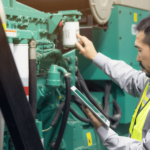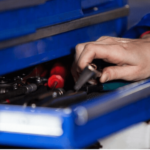In healthcare, uninterrupted power is not just a convenience; it’s a critical necessity. Hospitals and healthcare facilities rely heavily on continuous power to maintain life-saving equipment, ensure patient safety, and preserve the integrity of medical processes. Power outages, whether due to natural disasters, grid failures, or other unforeseen circumstances, can put lives at risk. This is where emergency generators for hospitals come into play, providing a vital safety net that ensures the continuity of healthcare services during power interruptions.
The Vital Role of Power in Healthcare
Power is the backbone of modern healthcare. It powers everything from basic lighting to advanced medical equipment like ventilators, monitors, imaging devices, and more. In an environment where seconds can make the difference between life and death, a loss of power can have catastrophic consequences. Hospital backup power systems are designed to prevent these scenarios by automatically switching to an alternative power source, typically a generator, the moment a power outage occurs.
Why Hospitals Need Reliable Power Sources
Hospitals are unique in that they operate 24/7 and cannot afford any downtime. Patients in intensive care units (ICUs), operating rooms, and emergency departments depend on a constant supply of power to survive. For instance, ventilators that help patients breathe, dialysis machines that purify blood, and heart monitors that track vital signs all rely on electricity. Even a momentary lapse in power can result in equipment failure, jeopardizing patient lives. This is why emergency generators for hospitals are not optional; they are mandatory.
How Generators Work in Hospitals
Do hospitals have generators? Absolutely. These generators are typically powered by diesel, natural gas, or propane and are designed to kick in automatically within seconds of a power failure. The transition is seamless, ensuring that there is no interruption in the power supply. These generators are capable of running for extended periods, providing power until the primary source is restored.
Hospitals usually have multiple generators and fuel sources to ensure redundancy. This means that if one generator fails or runs out of fuel, another can take over, ensuring continuous operation. The power provided by these generators is directed to critical systems and equipment, including life-support machines, surgical lighting, medical refrigeration units, and more. In essence, these generators ensure that the hospital remains fully operational, even in the most challenging circumstances.
The Impact of Power Outages on Healthcare Services
Power outages in healthcare settings can have dire consequences. Without hospital backup power, essential services like surgeries, emergency care, and intensive care would come to a halt. Medications that require refrigeration could spoil, diagnostic equipment could malfunction, and patient records stored electronically could become inaccessible.
Also, a power outage could lead to a chaotic environment where medical staff are unable to perform their duties effectively. For instance, in a situation where patients need to be evacuated due to a prolonged outage, the absence of power could hinder communication, lighting, and the operation of critical transport equipment like elevators.
In some cases, power outages can lead to the transfer of patients to other facilities, which can be risky, especially for critically ill patients. This not only puts the patients at risk but also strains other healthcare facilities that may already be operating at capacity.
Case Study: Generator Control Upgrade at a UAE Hospital
A relevant case study from the UAE involves a well-known hospital that upgraded its generator control systems to ensure reliable emergency power. Here are the details:
Background
A prominent hospital in the UAE faced challenges with its FG Wilson generators, which were equipped with outdated Woodward Gen6000 controllers that were no longer supported. This situation raised concerns about the performance and reliability of the Automatic Transfer Switch (ATS) system, crucial for maintaining emergency power.
Project Overview
The hospital sought assistance from Goltens Energy Control Solutions (GECS) to upgrade the generator control systems. The project was structured in three phases to ensure continuous power availability while the upgrades were executed.
Phased Upgrade Approach
Phase 1: The initial phase involved testing all four generators with the existing controllers to establish a performance baseline. Two generators were isolated from the power bus, and mobile generators were connected to maintain power supply during the upgrade. The new Woodward easYgen 3200XT controllers were installed, and extensive testing was conducted to ensure proper functionality.
Phase 2: The remaining two generators underwent the same upgrade process. Load testing was performed to confirm that the generators responded correctly to commands, ensuring they could handle the hospital’s critical power needs.
Phase 3: The ATS system was upgraded from traditional relay logic to the Woodward LS5 controllers. This upgrade provided enhanced monitoring capabilities, including voltage, frequency, and error logging, which are essential for traceability and troubleshooting.
Results
The phased approach allowed for uninterrupted emergency power during the upgrades. The hospital benefited from improved reliability and performance of its generator systems, ensuring that critical operations could continue without disruption. The upgraded ATS system enhanced monitoring and response capabilities, significantly reducing the risk of power failure during emergencies.
This case study highlights the importance of maintaining and upgrading generator systems in healthcare facilities to ensure continuous and reliable power supply, which is vital for patient safety and operational integrity in hospitals
Technological Advancements in Hospital Generators
Over the years, there have been significant advancements in generator technology, making emergency generators for hospitals more reliable, efficient, and environmentally friendly. Modern generators are equipped with advanced monitoring systems that can detect potential issues before they become critical. These systems can alert maintenance teams to problems such as low fuel levels, overheating, or mechanical failures, allowing for timely intervention.
Plus, advancements in fuel technology have led to the development of cleaner-burning fuels that produce fewer emissions. This is particularly important in urban areas where air quality is a concern. Hospitals are also exploring the use of renewable energy sources, such as solar power, in conjunction with traditional generators to reduce their carbon footprint and ensure a more sustainable backup power solution.
Another significant advancement is the integration of smart grid technology, which allows hospitals to better manage their power consumption and switch between power sources more efficiently. This technology can also enable hospitals to participate in demand response programs, where they can reduce their power consumption during peak demand periods in exchange for financial incentives. This not only helps the grid but also ensures that the hospital’s backup power systems are in optimal condition.
Challenges in Maintaining Hospital Generators
While hospital backup power systems are essential, maintaining them presents several challenges. Generators must be regularly tested and maintained to ensure they are in working order when needed. This includes routine inspections, fuel quality checks, and load testing. Failure to perform regular maintenance can result in generator failure during a power outage, defeating the purpose of having a backup system.
Another challenge is the cost of maintaining and upgrading these systems. Hospitals must balance the need for reliable backup power with the financial constraints they face. However, the cost of not having a reliable backup power system can be far greater, both in terms of patient safety and financial liability.
Plus, hospitals must also deal with regulatory requirements related to emergency generators for hospitals. These regulations are designed to ensure that hospitals are prepared for power outages, but they can also add to the complexity and cost of maintaining these systems. Hospitals must stay up-to-date with these regulations and ensure their systems are compliant to avoid penalties and ensure the safety of their patients.
The Future of Hospital Backup Power
As technology continues to evolve, the future of hospital backup power looks promising. One area of development is the use of battery storage systems in conjunction with traditional generators. These systems can store energy during periods of low demand and release it during outages, providing a seamless transition between power sources. This can reduce the reliance on fossil fuels and provide a more sustainable backup power solution.
Another area of development is the use of microgrids, which are small-scale power grids that can operate independently of the main grid. Hospitals could use microgrids to manage their power supply more effectively, ensuring that critical systems always have the power they need. Microgrids can also integrate renewable energy sources, providing a more sustainable and resilient power solution.
In addition, there is ongoing research into the use of hydrogen fuel cells as a backup power source for hospitals. Hydrogen fuel cells are highly efficient and produce only water as a byproduct, making them an environmentally friendly option. While the technology is still in its early stages, it has the potential to revolutionize hospital backup power in the future.
Conclusion
The importance of emergency generators for hospitals cannot be overstated. They are a critical component of a hospital’s infrastructure, ensuring that life-saving equipment remains operational and patient care continues uninterrupted during power outages. As healthcare technology advances and hospitals become more reliant on electronic systems, the need for reliable hospital backup power will only grow.
Do hospitals have generators? Yes, and for a good reason. These generators are the last line of defense against power outages, providing a lifeline that ensures the safety and well-being of patients. As we look to the future, continued investment in generator technology and backup power systems will be essential in maintaining the resilience of our healthcare infrastructure.
Hospitals must prioritize the maintenance and upgrade of their hospital backup power systems to ensure they are prepared for any situation. This includes regular testing, compliance with regulations, and exploring new technologies that can enhance the reliability and sustainability of their backup power solutions.
By doing so, hospitals can ensure that they are ready to face the challenges of the future and continue to provide critical care to those who need it most. At the same time, if you’re looking for a power generator in the UAE, BlueDot Trading LLC, your go-to generator suppliers in Dubai, have you covered! Get in touch with us to learn more.








